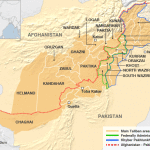Flashpoints of Terrorism in Pakistan
By
Sabena Siddiqui
Strategic Thinker & Defence Analyst on Pakistan & Global Affairs,
Distinguished Opinion Leader,
Pakistan Think Tank
Terrorism in Pakistan has multi -ethnic , multicultural and
multi-lingual patterns .
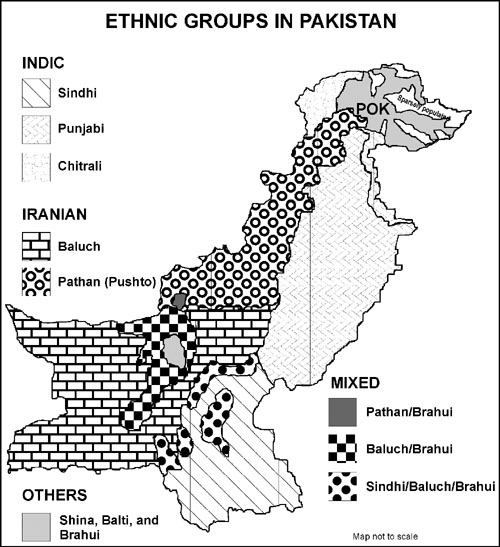
Punjabis are the largest ethnic group 44.15%, Pashtuns 15.42%, Sindhis
14.1%, Seraikis 10.53 %, Muhajirs 7.57% ,Baluchis 3.57 % and Others
4.66%
8 million Muhajirs arrived from India in 1947 and 1.7 million Afghan
refugees came later making this one of the largest refugee populations
in the world .
English is the official language, Urdu national and Punjabi , Sindhi
Pashto and Baluchi are regional languages .
Pakistan has 95% Muslim population ,75% Sunni and 25% Shia , the
second largest Shia population in the world after Iran .
1.85% are Hindus and 1.6% are Christians , Pakistani society is
largely hierarchial.
Such diversity results in conflicts created by four types of terrorist
groups : language based , sectarian ,race based and religious .
Muhajirs from India settled in Karachi did not want the shifting of
capital from Karachi to Islamabad which resulted in a loss of
bureaucratic power ,jobs , housing and transport .
Consequently they have been blamed for demanding a separate state ,
province or complete control of city government in Karachi and
Hyderabad .
Grievances between Shias and Sunnis date back to the early period of
Islam , Deobandis allege that Shias use abusive la nguage against some
of the Prophet pbuh s companions and wish that the Shias be declared
non Muslim .
They are considered Muslims everywhere including Saudi Arabia ,even
the Darululoom Deoband, the Deoband founding madrassa considers Shias
as Muslim.
Their Fatwa says that if a person prefers Hazrat Ali but does not
believe the other Shia beliefs then he is not Kafir .
Balochistan is less economically developed and has less civil and
military representation , they allege lack of provincial autonomy and
lesser resources from the federal government.
They have minimum population and maximum area and resources are
distributed according to population .
Some groups propose secession from Pakistan, Baluchis are 3.57% of the
total Pakistani population .
Religious militancy in Pakistan is varied , they demand enforcement of
Sharia like that by the Afghan Taliban .
There is nothing in the laws of Pakistan which contradicts Islamic law
and most Pakistanis prefer a modern life than be fundamentalist .
There are numerous absolute interpretations of Islam .
Terrorism here today is the result of five factors both internal and external .
1. General Zia conducted a coup d etat and ended Bhuttos government in 1977 .
Al Zulfiqar came into being after Bhutto s execution and committed
terrorist crimes like hijacking .
Zia also formed the MQM , a language based party of refugees from
India to break the strength of Bhutto s PPP .
MQM s inception and evolution brought about violence , this single
factor alone was responsible for 90% of the terrorism in urban Sindh
and 40% in the country .
2. General Zia enforced some new Islamic laws to legitimize his dictatorship .
One of these was the Zakat and Usher Ordinance 1980 .
Meanwhile , the Iranian revolution took place and influenced the
Pakistani Shia community to demand exemption from this new tax based
on Sunni law .
As Shias became more forceful , Zia helped form the Sipah e Sahaba ,
an anti Shia Deobandi organisation . It got funded by both Iraq and
Saudi Arabia and formed splinter groups like the Lashkar e Jhangvi .
30% of terrorism is caused by these sectarian groups so about 70% of
terrorism in Pakistan is sectarian or language based .
3. The Soviets invaded Afghanistan in 1979 and the US and the Saudis
invested 6 billion dollars to train the fighters to overthrow the
Soviets .Madrassas proliferated to produce the requisite fighters and
Kalashnikovs were handed to them .Zia was in a strong position against
the Peoples Party and Shias .
4. The Soviets were defeated in 1989 and the US neglected the fighters
it helped train and the fighters felt over confident after defeating
tge Soviet Union and ultimately challenged the US .
5. The US invaded Afghanistan in 2001 with Pakistani assistance and
this created Arab Mujahideen and Taliban enemies for Pakistan .
Drone attacks on Pakistani territory further created a backlash
against Pakistan .
India established four consulates and an embassy in tiny Afghanistan
and started creating problems in Balochistan province of Pakistan .
Weapons used by TTP against Pakistan army in Swat were all US made
which US says were stolen in Afghanistan .
The US also got worried about the building of Gwadar port by China in
Pakistans Baluchistan province , it felt this might decrease US
importance in the region .
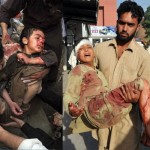
These were the main triggers of terrorism, the provincial capitals
were particularly volatile as those were the government power base
.Terrorists felt they wreaked more destruction there , got more media
coverage , more targets and more hiding places .
Other main areas of conflict were places like Dera Bugti ,Kohlu and
Sibi with gas fields and grudges against the federal government .
Southern Punjab. , Jhang and Faisalabad also were the focus of
terrorist activity due to sectarian conflict .
Swat ,D.I Khan and South and North Waziristan had some local conflict .
Karachi became a case study for terrorism with perceptible levels in
1990 attaining a
peak in 1995 with 616 incidents .
Karachi has a higher terrorism percentage than what is due to it in
population 10% and area 3530 square km 0.44%.
Terrorism in Karachi is more frequent because of its demographic
composition and being metropolitan and a provincial capital .
Terrorism here has more symbolic and theatrical value .
Karachi is also unique in being the only source of conflict in Sindh
because of its socioeconomic conditions and demographic changes .
It had a population of 400000 in 1947 which was 18,00,00,000 in 2009.
Population increased because it was the first national capital , only
seaport ,first international airport ,industrial base ,financial hub
and home to millions of migrants from India ,Afghanistan and Pathans
from KP and Punjabis from Punjab .
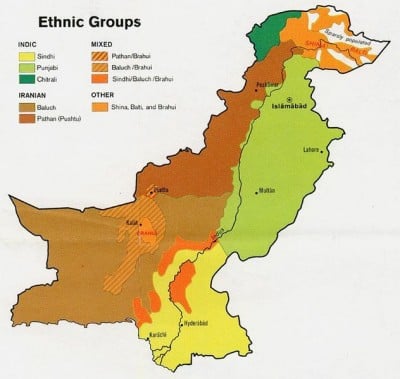
Karachi has very unusual demographics , capital of Sindh yet only 7.22
%Sindhis .Ninety three percent population comprises of immigrants
48.52% Muhajir , 13.94% Punjabi,Pashto 11.42%, Balochi 4.34%, Saraiki
2.11 % and others 12.44%.
Karachi is the largest Pashtun city in the country ,more Baluchis in
Karachi than in Baluchistan and it is the sixth largest Punjabi town .
The politics of Sindh province has many conflicts : Sindhi v Muhajir ,
Muhajir v Punjabi, Muhajir v Muhajir and Muhajir v Pathan .
Also most of the MQM are Shias and most Pathans Deobandi .
It is also a very young population .In 1987 , 36% of the population
was between age 14 and 30. 71% of them were literate while overall
Karachi literacy is 55% and overall Pakistan figure is 26.17%.
22% were graduates and the amenities were not sufficient for the
rising population .
Housing conflicts turn into ethnic rivalry and transport problem
accentuates it .
The first ethnic vi olence was Muhajir v Pathan in 1987 when a Muhajir
college girl was killed in an accident by a Pathan van driver .
Weapons were cheap and widely available , a pistol could be bought for
3000 rupees $40 dollars and a Kalashnikov for 16 thousand rupees $188
dollars .
The MQM split into two factions amid intense violence in 1993 and 1994 .
Main target types were private citizens, private property and
businesses as they are soft targets with no defense or deterrence .
They are in large numbers , and once attacked , more likely to compel
government to give in to terrorist demands .
Data also shows that police are the the target in 10% incidents in
Pakistan and rest of the world , they come in as the first line of
response and so they are targeted .
Military , civil administration and educational institutions , music
and barber shops closely follow as targets , these are attempts to
destabilise the state .
Another dimension of analysis is the efficacy of weapons employed as
per casualties , suicide attacks killed and wounded 42 people per
attack , explosives 9.4 , firearms 4.3 and projectiles 7.3 .
From 1987 to 1990 explosives were mostly used , from 1991 till 1997
firearms were more frequent and from 1998 till 2007 explosives were
more common .
Explosives are difficult to obtain and require more organisation so it
is deduced that usually a foreign hand is behind it . Explosives are
also mostly used to destabilise the government .
Suicide attacks are most damaging and they started in 1995
infrequently till 2001 , after this they spiralled and there were 56
attacks in 2007. Throughout the world there were 188 suicide attacks
from 1980 till 2001 but Pakistan had 56 in a single year .
Usually the strategic goal is to reclaim homeland but in Pakistan ,
there is no foreign occupation .
Suicide attacks took place also as a reaction to the government
operation on the Red Mosque in Islamabad in July 2007. 8 attacks
before the operation and 48 afterwards , most probably the foreign
jihadis brought the technique .Arab clerics preached in favour of
suicide attacks while the underworld provided funding and bombers were
found locally .
Terrorism in Pakistan is an extreme reaction to political and economic
grievances and ethnic / religious issues , vested interests provide
backup .
The US led invasion of Afghanistan and Iraq brought changes in
terrorism patterns in Pakistan .There was an increase in suicide
attacks against government institutions .
Attacks now are more frequent in KP and Baluchistan ,sectarian and
language based incident decreased but ethnic incidents increased as
militants multiplied .
This definite geographic shift in terrorism is post US invasion of
Afghanistan , the area of conflict is now the west of Pakistan .
The possibility remains that sponsorship of this terrorism post 9/11
may be from India ,the US or Iran , the implications may be policy
related .
These ethnic ,political and religious conflicts are endemic to
Pakistan and despite them life went on as normal unless internal or
external parties used them to further their own interests .
The conflicts resulted from socioeconomic grievances ,issues of
provincial autonomy and demographic changes ,these conflicts turned
unto sectarian, ethno-linguistic, ethni-secessionist and religious
motives for terrorism .
Places such as Baluchistan , South Punjab ,Waziristan and Karachi were
badly affected .
Communism and Capitalism have also played their part since Pakistan
came into being, geo-strategic politics of this region has brought
about many battles between the two.
India feels encircled and intimidated by Chinese presence near its
waters,Gwadar is also an alternative to Dubai and Iran’s new port
Chabahar.
Therefore , US, India and Iran find Gwadar a threat and terrorism in
Baluchistan is closely linked to this factor .
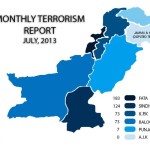
Kalashnikov culture developed in Pakistan as a direct consequence of
the Afghan war , US bought Chinese weapons to supply the Mujahideen
and half of these got sold in the local market .
Terrorism is cyclical in essence , todays events are a harbinger for
what transpires tomorrow.
The cycles are reflective of the immediate past as terrorists prepare, plan and the government is caught unawares .
The basis for terrorism remains and terrorists return with a new agenda .





